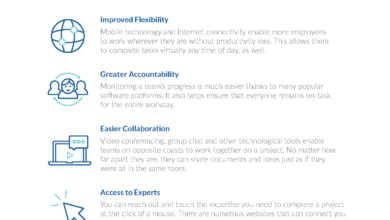[ad_1]
Because consumers have access to so many choices, we typically see how a company presents itself before we ever try one of its products. Branding, as a result, can be just as important as the actual quality of your product — especially when stocked with other products in a supermarket or listed on an online storefront.
Your product packaging could be the first encounter a new customer has with your brand. It needs to quickly communicate what you’re trying to sell, what makes it different and why the customer should buy that product rather than any of the others stocked in the same place. There are also practical concerns — like functionality or stackability — that may make product packaging less effective than it could be.
These are six ways to tell if your product packaging may actually be hurting your branding efforts and what you can do to design packaging that sells a product, rather than hold it back.
1. Your Packaging Doesn’t Tell and Sell
Good packaging should both tell a customer what’s inside and sell that product. With a glance, a customer should have a decent idea of the product inside and why it’s unique.
Download Branding Resources Guide
Building a brand starts by having the right tools and advice. Download our top 10 essential tools and resources to kick-start your branding.

Simple or subtle design elements can communicate a lot about what makes your offerings unique. Bold color schemes and elegant fonts can suggest high-quality, luxury items. Textures, earth tones and agricultural imagery, on the other hand, can tell a customer that they’re looking at a product that’s organic, all-natural or sustainably made.
Some of the success of your product containers may be dependent on your branding. If your brand doesn’t really tell the story of your company — what you sell and why you sell it — it may be hard to correct brand-aligned packaging that effectively tells and sells. In this case, a rebrand or smaller adjustments to your company’s look may be the best option.
2. Your Packaging Is Wasteful
Wasteful or unnecessary packaging is bad for everyone and the planet. It often costs more, may generate hard-to-recycle waste and could alienate customers who are looking for ways to reduce their consumption.
Simple tweaks can make product packaging much more eco-friendly and efficient. Switching to sustainable packing materials, for example, or opting for biodegradable plastics, can reduce waste. Typically, you won’t need to rebrand to manage wasteful packaging. Tackling inefficient or non-sustainable product containers is a good place to start if you want to make your brand seem greener or cut back on manufacturing costs.
Wasteful products — like those in plastic clamshell containers — can also be hard to open, combining the problem of wrap rage with growing consumer dislike of plastic packaging. While containers pose a very temporary inconvenience for customers, they can still be frustrating, and may even make a customer less likely to buy from the same company.
3. Your Packaging Makes the Product Hard to Use
Hard-to-use packaging can hurt any product, even if the packaging is an effective brand ambassador in every other respect.
For example, a company may manufacture a cleaning spray in a distinctive bottle that is, unfortunately, not ergonomic or makes it hard to use the last of a product. This product may secure the first sale with its look, but turn off a customer from future purchases because it’s hard to use.
Ease-of-use should be one of your key considerations in package design, along with look, durability, stackability and sustainability. Simple usability testing or fielding feedback via email surveys can give you a sense of how well your current package design works and how it could be improved.
4. Your Packaging Is Inconsistent
Consistency in branding is one of the marketer’s best tools. With consistency, it’s more likely that customers will really remember your brand. With awareness, they could develop a preference for your products and may even recommend your business to friends or family.
Products in the same line should look like they’re coming from the same company. This helps build brand awareness, and it may even encourage customers to buy other products you sell if they have good experiences with your company.
5. Your Packaging Is Hard to Ship or Stock
Unusual packaging can help a product stand out. However, it can also make items more expensive to ship or stock. Packaging that’s not durable enough may also sustain damage in transit, potentially making a product unsellable.
Simple changes can help here. Square or rectangular boxes are always going to be easy to ship and stack. Looking to your competitors may also help. If they’re well-established, their packaging may provide hints for how you make your offerings easier to transport or shelve.
These changes may also provide an opportunity for making your packaging or containers more sustainable and more durable or efficient at the same time.
6. Your Packaging Is Hard to Understand
If a container makes any claims, it should be in the language that a customer speaks. Clearly communicating benefits with phrases your target audience will understand can help make sure they don’twalk away confused about what your product offers.
Understandable doesn’t always mean simple. Some businesses — like those manufacturing supplements, high-end skincare products, electronics or niche items — may have a highly informed customer base. These consumers can have different vocabularies and may expect clearer, more direct descriptions of how a product works.
References to specific ingredients, like vitamin C, creatine or rosehip oil, could confuse a general audience, for example — but the benefits they offer may be perfectly clear to certain customer segments.
How to Keep Packaging in Line With Your Branding
Packaging and branding that work together will be essential if you want to attract customers and keep your business growing. When evaluating your products, it’s best to make sure their containers effectively communicate the benefits. They should also be easy to use and open and, whenever possible, generate minimal waste.
Lexie is a branding enthusiast and web designer. She loves checking out local flea markets and taking her Goldendoodle on hikes. Follow her on Twitter @lexieludesigner and check out her design blog, Design Roast.
[ad_2]
Source link






